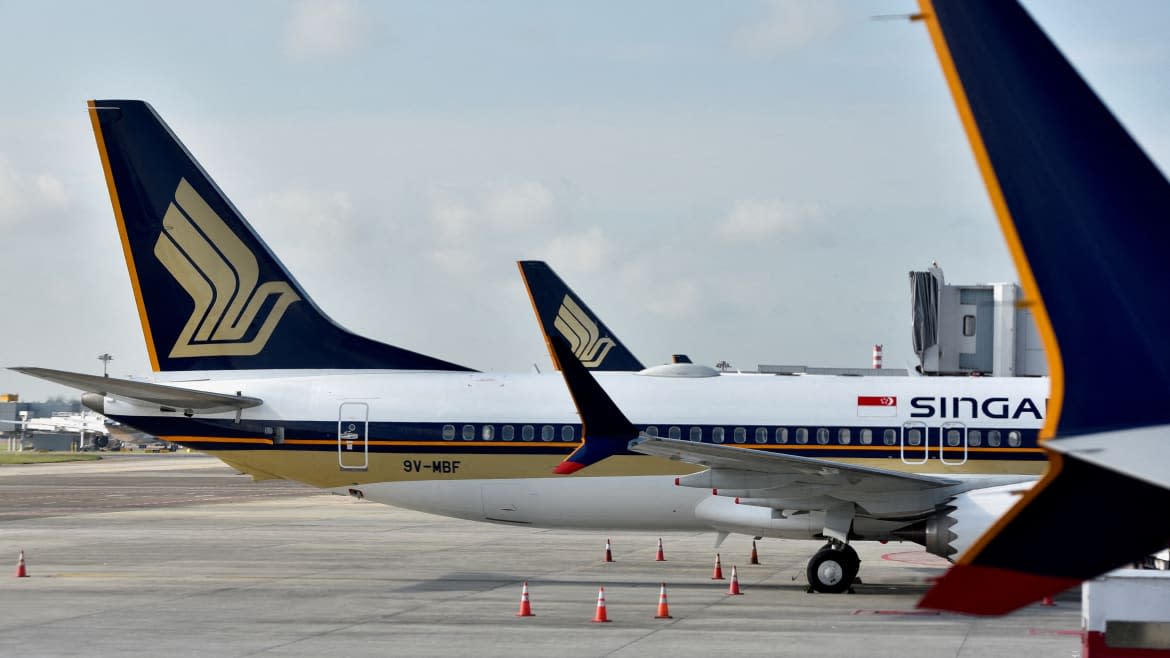An Expert’s Guide to Surviving Extreme Plane Turbulence

News that a 73-year-old man died and seven others were critically injured when wild turbulence hit a Singapore Airlines flight on Tuesday is the stuff of most fliers’ nightmares. Couple that with the fact climate change is making turbulence more common and severe and it’s enough to make even frequent fliers a little anxious.
Flying is statistically safer than ever (the odds of dying in a plane crash are about one in 11 million, making the taxi ride to the airport far more dangerous) and deaths caused by turbulence are exceedingly rare. In fact, authorities said the 73-year-old British man likely died from a heart attack during the terrifying episode.
Severe Turbulence on Singapore Airlines Flight Was So Bad It Killed a Passenger
That said, there are some precautionary measures passengers can take in case their flight gets particularly bumpy. Here are experts’ top tips for surviving turbulence.
Keep your darn seatbelt on
It’s the simplest and the most effective advice, particularly because turbulence can be hard to forecast. “I’m always amazed when I fly how many people I see seated with their seatbelt off, or their seatbelt completely loose and extended,” Shawn Pruchnicki, an aviation professor at The Ohio State University and a former commercial pilot, told The Daily Beast.
He said that although serious injuries from turbulence are uncommon, the unpredictability of it can be a problem, as was the case with the Singapore Airlines flight which suddenly and unexpectedly dropped 6,000 feet in minutes.
“There are times that we do know when we could possibly have turbulence but there are times when you’re flying alone—I experienced this myself one time—and the air is smooth then all of a sudden this happens without warning,” he said. If you have your seatbelt on, however, your changes of injury are negligible.
Stay calm... if you can
Data from the Federal Aviation Administration shows how rare serious turbulence injuries are: 146 passengers and crew members were seriously hurt in the 12 years leading up to 2021.
What is far more common are some of the harmful side effects of anxiety and stress like difficulty breathing, elevated heart rate, dizziness, and even fainting.
“Our anxious thoughts can be so powerful that they even activate our physical systems,” Dr. Kevin Gilliland, previously told NBC News. “That means our breathing becomes shallow, our chest gets tight, our palms get sweaty, we feel nauseated and maybe even lightheaded.”
Spend as much time seated as possible
“I fly a lot of international flights but I’m always surprised by the amount of people I see walking around for long periods of time, hanging out at the back, talking to other people, talking to the flight attendants,” Pruchnicki said. “They’re really putting themselves at risk for turbulence and things like we saw from Alaska Airlines flight with the door blowing out, or a burst of decompression.”
Is there a safest seat on the plane?
Aircrafts are designed to be extremely robust during turbulence but, just like a see-saw, turbulence can be felt more at the extremes of either end of an aircraft where the force is greater if the nose of the plane is pitching up or down.
In contrast, a TIME investigation that looked at 35 years of aircraft accident data found that the middle rear seats had the lowest fatality rates (28 percent) compared to middle aisle seats (44 percent). As CNN pointed out, part of this is logic: Sitting nearer to an exit row may mean you’re closer to safety in the case of an emergency, while being in the middle gives you a buffer of people on either side, and being at the back means you’d likely be impacted after those at the front.
Get the Daily Beast's biggest scoops and scandals delivered right to your inbox. Sign up now.
Stay informed and gain unlimited access to the Daily Beast's unmatched reporting. Subscribe now.

